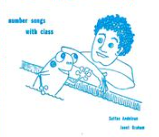Some mathematicians define math as “the science of patterns.” The academic term “number sense” is the recognition of patterns in numbers, or elementary number theory. Skip counting is a natural way to connect to the fascinating patterns in the world of numbers. Sadly, in the Commonwealth of Virginia, the Standards of Learning include skip counting only by twos, fives and tens. The elephant that is missing from the number theory room is the threes. For the short, illustrated version of this argument, see our recently posted YouTube video 3-6-9 Pat-Pat (for teachers and parents) at YouTube . In this video we have added a hand clap pattern to the 3-6-9 number pattern. The hand clap adds another layer of modality and engagement for children.
My husband Saffan Andolsun and I have used skip counting as the basis for number exploration over the past four decades. We have found the number three to be pivotal in a child’s understanding of number. The properties of the multiples of three play a role at all developmental levels. The number three is a valid topic of study for the preschooler and the student of advanced number theory alike. Here are some tasks in rough order of developmental appropriateness:
Seriation is the child’s ability to call out number names in order (1, 2, 3, 4, 5 or 3, 6, 9, 12, 15, etc.) without regard for the meaning of the words they are calling out. Seriation precedes cardinality in a child’s understanding of number.
Memorization of any sort is best accomplished three items at a time.
Cardinality is a child’s ability to say the names of the numbers in correct series as she identifies the members of a set (one-to-one correspondence), and to grasp the concept that the last-named number defines the number of the set. In general, if you ask a child who does not have cardinality how many are in a set of three, they will respond with “1, 2, 3.” If you follow up immediately with, “How many are there?” They will again respond, “1, 2, 3.” A child who has cardinality of three will respond, at least the second time, “3.”
Subitizing is the ability to identify the cardinality of a set without calling out the number names in the set. The number three is the first number that has multiple configurations. One is unique. Two is always in a line. Three can be in a line or like the vertices of a triangle. Three in a line can be clumped two and one or three evenly spaced. If a child can recognize two and one as three, they are ready to conquer beginning addition facts.
• Once a child has achieved cardinality of three, they can achieve the cardinality of three sets of three as well, as long as they know the seriation 3, 6, 9.
There is abundant literature on the Counting On strategy for addition. Starting with the larger number and counting on is a good beginner’s strategy. It is the foundation of the understanding of the Commutative Law of Addition. But as the numbers grow bigger, it becomes difficult for the child to keep track of the second addend. There are not enough fingers! three is possibly the largest number we should encourage children to “count on”. Other strategies become necessary in order to develop appropriate number sense.
Jumps on a number line are powerful aids for visualizing number operations. For repeated addition of threes, you skip two numbers and then say the third.
Fives times tables are quickly mastered because the seriation of fives is an easy pattern to learn. 5, 10, 15, 20, 25, 30, 35, 40….. The patterns for tens and elevens are also easily mastered. Threes are a challenge because a pattern is not discernable to the ear. Skip counting as repeated addition can be helpful to a student learning the threes times tables.
Threes have a repeating odd-even pattern. The threes are a perfect jumping off place for a discussion of evens and odds
Skip counting by six is skip counting by every other three. Why?
How does skip counting by nines relate to skip counting by threes?
Have your child list the threes, possibly using a number line. Eventually the one’s place repeats the 3, 6, 9 pattern. After how many in the list does the pattern repeat?
Compare the repetition of the one’s place for twos, threes, fives and tens. Do you see a pattern?
Have your child list the threes backwards from 27 down to 3. This contributes to a child’s facility with an appropriate subtraction strategy and an understanding of division as repeated subtraction.
Once the threes are listed backward, list the sevens forward. How are the two patterns alike? Can you generalize the pattern to other multiples?
We hope you have found our discussion of threes to be helpful, and we welcome your comments, extensions, innovative ideas and accounts of your experiences.
By: Janet Graham


